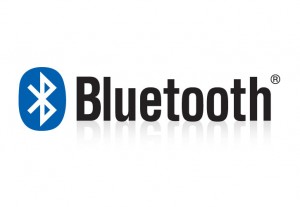Bluetooth. When you hear that word, it is very likely that you think about the earpieces that you see people wearing while appearing to talk to themselves. In reality, that is only one of many uses for Bluetooth technology. To quote Wikipedia: “Bluetooth is an open wireless protocol for exchanging data over short distances from fixed and mobile devices, creating personal area networks.”
History
Bluetooth was invented by a pair of engineers working for Ericsson Mobile Platforms in 1994 in Sweden. The original plan was to use Bluetooth as a wireless alternative to RS232 cabling.
In it’s simplest form, Bluetooth is a set of specifications that do different things wirelessly. The organization that administers these specification is the Bluetooth Special Interest Group (SIG). The SIG was established by Ericsson, IBM, Nokia, Intel and Toshiba. Today, over 11,000 companies are part of the SIG. All of these companies work together to develop new specifications and to improve and expand on the existing sets.
Bluetooth was named after the 10th century King Harald I of Denmark and Norway. King Harald I united the Danish tribes into a single Kingdom much the same way that Bluetooth technology unites many communication protocols into a universal standard.
What is it?
Bluetooth is actually just a protocol that describes how 2 devices talk to one another. This communication is designed to be very secure and work over a short distance (1 – 100 meters). In terms of transmission speed, Bluetooth is relatively slow compared to other methods like WiFi. Bluetooth data rate currently tops out at about 3 Megabits per second. Bluetooth also is very energy efficient, making it a great choice for battery powered devices.
There have been several versions of Bluetooth. Bluetooth 1.0 and 1.0B had data rates of about 1 Mbits/second and didn’t work very well. Most of these issues were resolved with v1.1. Version 1.2 increased the connection and discovery speed. Version 2.0 introduced EDR or Enhanced Data Rate. This allowed for data speeds of up to 3 Mbits/sec. Version 2.1 made some “maintainance” changes and fixed some bugs. Version 3.0 was introduced in April of 2009 and introduced AMP or Alernative MAC/PHY. In easy terms, the devices will communicate as normal until a lot of data needs to be sent. At that point a WiFI signal will be used instead. This allows for a more power efficient transmission of large packets.
Applications
As stated above, Bluetooth is actually a set of profiles that do different things. Here are a few examples of what these profiles do:
- A2DP – Advanced Audio Distribution Profile is used to stream stereo or mono audio from one device to another
- CTP – Cordless Telephone Profile
- HFP – Handsfree Profile
- HSP – Headset Profile
- VDP – Video Distribution Profile is used to stream video
There are many more profiles and you can read about them at www.bluetooth.com
Devices that use Bluetooth may contain several of these profiles. For example a mobile phone handsfree device may contain the handsfree profile, the headset profile and the A2DP streaming audio profile. These all allow the device to interact differently with different devices.
In addition to an earpieces for your phone, you are probably already using many Bluetooth devices. The Nintendo Wii and Sony Playstation controllers are Bluetooth enabled. Wireless keyboards and mice use Bluetooth. Many printers operate wirelessly with the BPP or Basic Printing Profile. There are a ton of applications in medicine and industry from inventory management to imaging.
Bluetooth is becoming more and more useful in your vehicle. In addition to handsfree earpieces, there are some very cool Bluetooth handsfree kits that integrate right into your dash or radio. These devices can play right through your existing audio system and utilize a quality microphone. Perhaps the coolest Bluetooth feature for the car (so far) is A2DP audio streaming. Say you have an A2Dp enabled handset like and iPhone and in-dash radio. You can stream all of your music right out of your vehicles speakers without any additional installation or cabling. Bluetooth handsfree for vehicles will be discussed in detail in part 2 of this series and audio streaming will be the topic of part 3.
Please let me know what you think so far and be sure to read parts 2 and 3 coming soon. Much of the information contained in this part is the result of research done online. To learn more about Bluetooth technology, visit www.Bluetooth.com and Wikipedia.


Leave a Reply